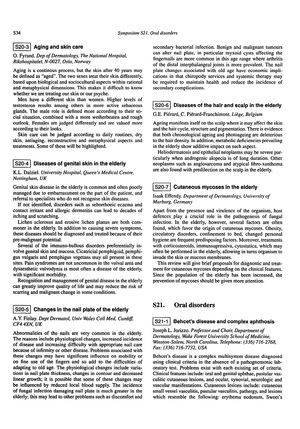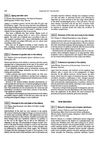Aging and Skin Care
September 1998
in “
Journal of The European Academy of Dermatology and Venereology
”
testosterone sebaceous glands antiaging lichen sclerosus erosive lichen planus nail plate hair density hair cycle hair structure hair pigmentation heliodermatosis epithelial neoplasms androgenic alopecia cutaneous mycoses host defenses obesity circulatory disorders anti-aging nail changes hair loss skin fungus immune system weight issues blood flow problems

TLDR The conclusion is that proper recognition and treatment of skin conditions are crucial for the elderly due to changes in skin, nails, and hair with age, and the impact of these conditions on health and mobility.
The document discusses various skin conditions associated with aging. It notes that skin is considered "aged" after 40 years and that men and women treat their skin differently due to biological and sociocultural factors. Men's skin, influenced by higher testosterone levels, tends to have more active sebaceous glands, while women's skin is often judged more on appearance. Skin care routines, dry skin, antiaging, reconstructive, and metaphysical aspects are mentioned as important considerations. The document also covers genital skin diseases in the elderly, which are common but often poorly managed, and highlights the importance of recognizing and treating conditions like lichen sclerosus and erosive lichen planus due to their pre-malignant potential. Changes in the nail plate with age are discussed, including physiological changes and increased incidence of disease, which can affect mobility and dexterity. Diseases of the hair and scalp in the elderly are also addressed, noting that aging affects hair density, cycle, structure, and pigmentation, with conditions like heliodermatosis and epithelial neoplasms being more severe in the presence of long-duration androgenic alopecia. Lastly, the document reviews cutaneous mycoses in the elderly, emphasizing the role of host defenses and the impact of predisposing factors like obesity and circulatory disorders, as well as the importance of prevention due to the increasing elderly population.
